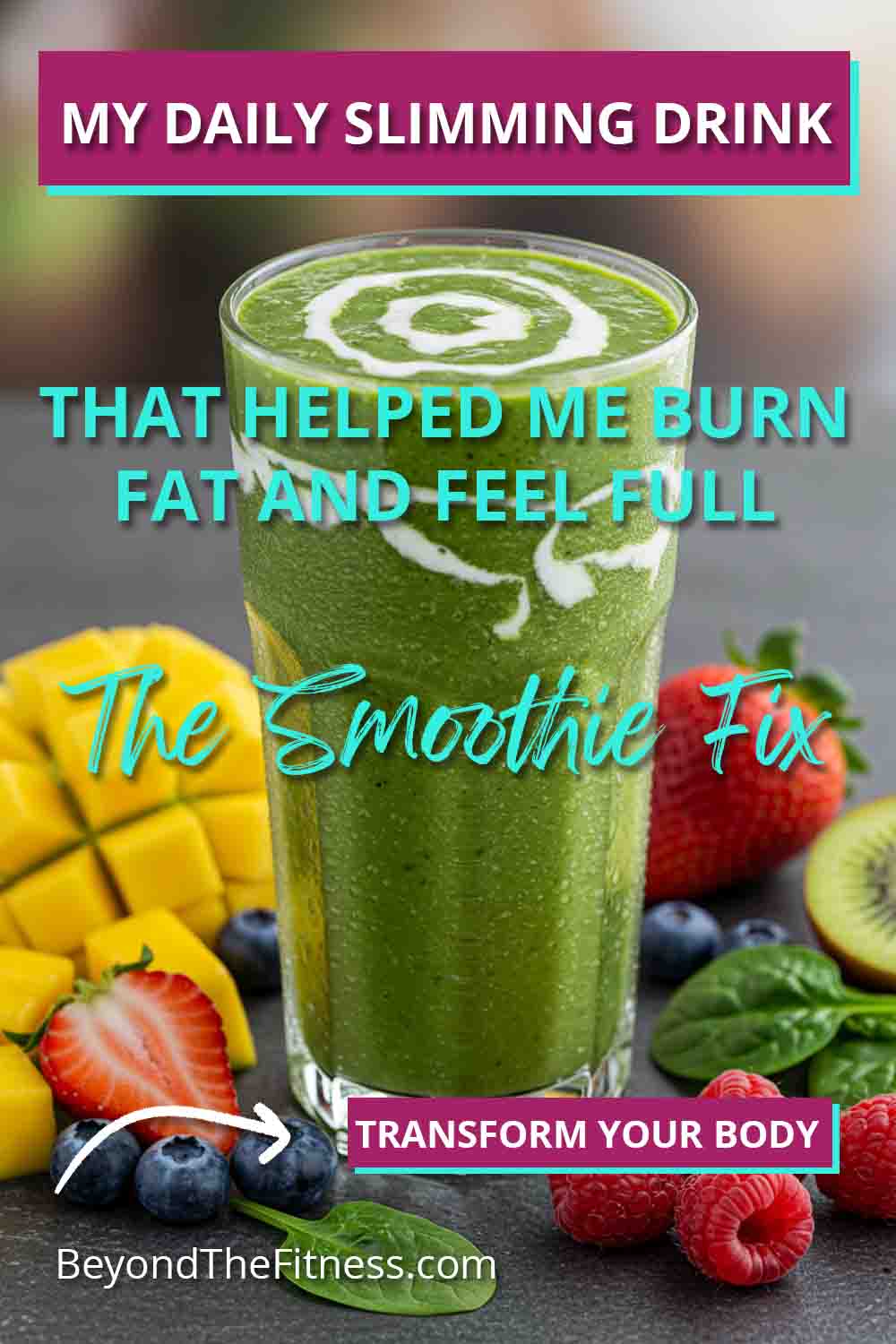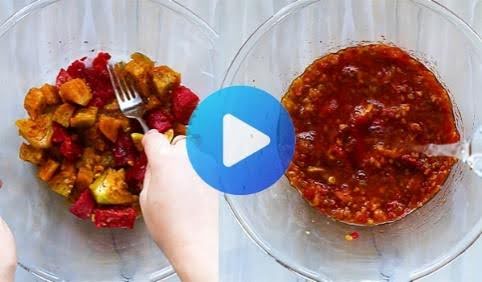Losing weight can feel like putting together a giant puzzle. You have pieces like exercise, eating healthy meals, getting enough sleep, and managing stress. But sometimes, it feels like one piece is missing. Could that missing piece be something as simple and delicious as a smoothie? I’ve worked with many women on their weight loss journeys, and smoothies often come up. They seem like a healthy choice, right? Blend up some fruits and veggies, maybe some protein powder, and you’ve got a quick meal or snack. But are they really helping you reach your goals, or could they be secretly holding you back? Let’s dive into the world of smoothies and see if they truly fit into your weight loss picture.
What Makes a Smoothie Potentially Good for Weight Loss?
Smoothies can be fantastic tools when you’re trying to lose weight, but it all depends on what you put in them. When made correctly, they offer several benefits.
1. Packed with Nutrients
One of the biggest pluses of smoothies is the ability to pack a lot of nutrition into one glass. You can easily blend fruits, vegetables, protein sources, and healthy fats together. Think about it: you might struggle to eat a whole bowl of spinach, a cup of berries, a scoop of protein, and some seeds separately, especially if you’re busy. But blended together, it becomes a convenient way to get vitamins, minerals, and antioxidants your body needs. This is super important during weight loss because when you cut calories, you need to make sure the calories you do eat are working hard for you nutritionally. Getting enough nutrients helps keep your energy levels up and your body functioning well, which makes sticking to your plan easier.
2. Fiber Power
Fiber is your friend when it comes to weight loss. It helps you feel full, which can stop you from overeating later. It also aids in digestion and helps keep your blood sugar levels steady. Many smoothie ingredients are great sources of fiber, especially fruits (like berries, apples with skin), vegetables (leafy greens, celery, cucumber), and additions like chia seeds, flax seeds, or oats. When you blend whole fruits and vegetables instead of juicing them, you keep that valuable fiber. Feeling satisfied after a meal or snack is key to managing hunger, and a fiber-rich smoothie can definitely help with that.
3. Protein for Fullness and Muscle
Protein is another superstar for weight loss. Like fiber, it helps you feel full and satisfied. Even more importantly, protein helps maintain your muscle mass while you’re losing fat. Why does muscle matter? Muscle burns more calories at rest than fat does. So, keeping your muscle helps keep your metabolism humming along. For women especially, getting enough protein can sometimes be a challenge, and smoothies offer an easy way to boost intake. Adding things like plain Greek yogurt, cottage cheese, tofu, or a good quality protein powder can turn your smoothie into a muscle-supporting, hunger-fighting powerhouse.
4. Hydration Helper
Staying hydrated is crucial for overall health and can also support weight loss. Sometimes thirst is mistaken for hunger. Smoothies, especially those with a base of water, unsweetened almond milk, or blended high-water-content foods like cucumber or melon, contribute to your daily fluid intake. While they shouldn’t replace plain water, they can certainly help you reach your hydration goals.
5. Built-in Portion Control
When you make a smoothie yourself, you control exactly what goes in and how much. You can measure your ingredients carefully – a cup of spinach, half a banana, one scoop of protein powder, a tablespoon of chia seeds. This makes it easier to track your calorie and nutrient intake compared to restaurant meals or pre-packaged foods where portion sizes and ingredients can be less clear. This control is a big advantage when managing your calorie goals for weight loss.
The Smoothie Trap: When They Work Against You
Now, let’s talk about the other side of the coin. Smoothies can quickly go from healthy helpers to weight loss saboteurs if you’re not careful. I’ve seen many clients make these common mistakes.
1. Hidden Sugar Bombs
This is probably the biggest pitfall. It’s easy to load up a smoothie with sugar without even realizing it. Using fruit juice as a base is a major culprit – it adds lots of sugar and calories without the fiber of whole fruit. Sweetened yogurts, honey, maple syrup, agave nectar, or even just piling in too much high-sugar fruit (like mangoes, grapes, or lots of bananas) can turn your “healthy” smoothie into something closer to a milkshake in terms of sugar content. Excess sugar leads to blood sugar spikes and crashes, can increase cravings, and contributes extra calories that hinder weight loss.
2. Calorie Overload
While nutrient density is good, calorie density can be tricky. Healthy ingredients like avocados, nut butters, seeds (chia, flax, hemp), coconut milk, or full-fat yogurt are nutritious, but they are also high in calories. A little goes a long way. It’s easy to get heavy-handed with these additions, thinking you’re being healthy, but quickly push the calorie count way up. A smoothie intended as a snack could end up having more calories than a full meal if you’re not mindful of portion sizes for these high-calorie ingredients.
3. The Missing Chew Factor
Drinking your calories isn’t always as satisfying as eating them. The act of chewing actually sends signals to your brain that you’re eating and helps register fullness. When you drink a smoothie, especially quickly, you bypass some of these signals. This might leave you feeling less satisfied compared to eating the same ingredients in their whole form, potentially leading you to feel hungry again sooner or seek out other foods.
4. Not Filling Enough (If Made Wrong)
If your smoothie lacks sufficient protein and fiber, it might not keep you full for very long, despite the calories consumed. A smoothie made mostly of fruit juice and fruit, for instance, might give you a quick energy burst followed by a crash and returning hunger pangs. A well-balanced smoothie needs those filling components – protein and fiber – to provide lasting satiety.
5. Replacing Whole Foods Too Often
You Might Be Interested In: Learning more about The Complete Smoothie Detox & Weight Loss Program
While smoothies are convenient, relying on them too heavily means you might miss out on some benefits of eating whole foods. The physical structure of whole foods impacts digestion and nutrient absorption. Plus, a varied diet with different textures and types of foods is generally best for overall health and gut microbiome diversity. Smoothies can be part of a healthy diet, but shouldn’t be the only part.
Building Your Best Weight Loss Smoothie: A Woman’s Guide
Okay, so how do you make a smoothie that actually helps you lose weight, keeping in mind the specific needs we have as women? It’s all about smart choices and balance. Here’s my blueprint:
1. Pick a Smart Base (Liquid)
- Best Choices: Water (zero calories), unsweetened almond milk (low calorie), unsweetened cashew milk, or even cooled green tea (adds antioxidants).
- Use Sparingly: Unsweetened coconut water (has natural sugars and electrolytes, good post-workout sometimes, but watch portions), low-fat plain milk (adds protein but also more calories/sugar than nut milks).
- Avoid: Fruit juices (apple, orange, grape), sweetened non-dairy milks, sugary sports drinks. These just add empty calories and sugar. Start with about 1 cup of liquid and add more if needed to reach desired consistency.
2. Prioritize Protein
This is non-negotiable for a filling, muscle-supporting smoothie. Aim for 15-25 grams of protein per smoothie, especially if it’s replacing a meal.
- Great Options: Plain Greek yogurt (0% or 2%), cottage cheese (low-fat), unsweetened protein powder (whey, casein, or plant-based like pea, soy, or a blend – check labels for added sugars), silken tofu.
- Why it Matters for Women: Protein helps maintain lean muscle mass during weight loss, which keeps your metabolism higher. It also contributes significantly to satiety, helping manage appetite.
3. Load Up on Veggies
This is where you can add lots of nutrients and fiber for very few calories. Be brave.
- Easy Additions: Spinach (you won’t taste it much), kale (a bit stronger flavor), cucumber (adds hydration), celery.
- Creamy & Sneaky: Frozen zucchini or frozen cauliflower florets blend in surprisingly well, adding thickness and nutrients without a strong taste.
- Goal: Aim for at least 1-2 large handfuls of leafy greens or about 1 cup of other non-starchy veggies.
4. Control Your Fruit
Fruit adds natural sweetness, vitamins, and fiber, but portion control is key due to sugar content.
- Lower Sugar Choices: Berries (strawberries, blueberries, raspberries, blackberries) are excellent – high in fiber and antioxidants.
- Moderate Portions: Use about 1/2 to 1 cup of berries, OR about 1/2 a medium banana, OR 1/2 an apple or pear (skin on for fiber). Using frozen fruit creates a thicker, colder smoothie without needing ice.
- Female Focus: Fruits provide essential vitamins and antioxidants that support overall health, which is vital when your body is undergoing the stress of weight loss.
5. Add Healthy Fats (Sparingly)
Healthy fats are important for hormone balance, nutrient absorption, and satiety, but they are calorie-dense.
- Good Sources: Avocado (1/4 max), chia seeds (1 tbsp), flax seeds (1 tbsp), hemp seeds (1 tbsp), almond butter or peanut butter (1 tbsp max – choose natural varieties with no added sugar or oils).
- Why Fats Matter for Women: Healthy fats play a crucial role in producing and balancing hormones, which can fluctuate during weight loss and impact mood, energy, and metabolism.
6. Flavor Boosters (Optional)
Add flavor without adding sugar or significant calories.
- Spices: Cinnamon (may help with blood sugar regulation), ginger (good for digestion), nutmeg, cardamom.
- Extracts: Vanilla extract, almond extract (use pure extracts).
- Other: Unsweetened cocoa powder (for a chocolatey taste), matcha powder (for an energy boost and antioxidants).
Smoothies vs. Whole Foods: Finding Your Balance
So, should you drink smoothies or eat whole foods? My answer is usually: both. Smoothies have their place, but they shouldn’t completely replace meals made of whole, unprocessed foods.
Think of smoothies as a convenient option. They are great for:
- Quick Breakfasts: When you’re rushing out the door but still want something nutritious.
- Post-Workout Recovery: Delivering protein and carbs quickly to your muscles when they need it most.
- Nutrient Boost: An easy way to sneak in extra greens or protein if your regular meals are lacking.
However, don’t forget the importance of actually eating your food. Chewing food takes time, aids digestion, and contributes to feeling satisfied. A salad with grilled chicken, veggies, and seeds provides similar nutrients to a smoothie but offers a different eating experience that might be more filling for some people.
My advice is to incorporate well-built smoothies strategically into your week, perhaps for one meal or snack per day, while ensuring the rest of your diet consists of whole foods like lean proteins, plenty of vegetables, whole grains, and fruits. Listen to your body – if smoothies leave you feeling hungry shortly after, you might need to adjust the recipe (more protein/fiber/fat) or opt for a solid meal instead at that time.
Timing Your Smoothies for Maximum Weight Loss Benefit
When you have your smoothie can also influence how effective it is for your weight loss goals.
- Breakfast: Starting your day with a protein-and-fiber-packed smoothie can set you up for better appetite control throughout the morning. It’s quick, easy, and prevents grabbing less healthy options on the run.
- Post-Workout: This is a prime time for a smoothie. After exercise, your muscles are ready to soak up nutrients for repair and recovery. A smoothie with protein and some carbohydrates (from fruit) is ideal within about 30-60 minutes after finishing your workout. This is especially important for women wanting to build or maintain lean muscle.
- Meal Replacement (Lunch/Dinner): This is possible, but requires careful planning. Ensure the smoothie is substantial enough in calories (likely 350-500 calories, depending on your needs), protein (20-30g), fiber, and healthy fats to truly replace a meal and keep you full for several hours. It might need to be larger or contain more calorie-dense ingredients (used mindfully) than a snack smoothie. I generally recommend solid food for lunch and dinner for better satiety, but a smoothie can work occasionally if needed.
- Snack: A smaller, lower-calorie smoothie (around 150-250 calories) can be a good snack option between meals to tide you over, especially if it’s packed with protein and fiber to prevent overeating at your next meal.
Smoothies and Exercise: A Power Couple for Women
For active women trying to lose weight, smoothies and exercise can work hand-in-hand.
- Fueling Workouts: While you generally don’t want a heavy smoothie right before exercising, a smaller, easily digestible smoothie with some carbs (like half a banana) and a little protein about 60-90 minutes beforehand can provide sustained energy without weighing you down.
- Optimizing Recovery: As mentioned, the post-workout smoothie is key. Exercise temporarily breaks down muscle tissue. Providing protein quickly helps repair that tissue, making muscles stronger and potentially boosting metabolism over time. Carbs help replenish glycogen stores (your muscles’ energy reserves). This recovery process is vital for seeing results from your workouts and preventing excessive muscle soreness.
- Hydration: Exercise increases fluid needs. A smoothie contributes to rehydration, especially if it has a water or coconut water base and includes hydrating foods like cucumber.
Common Smoothie Mistakes I See (And How to Fix Them)
Let’s quickly recap the traps to avoid:
- The Sugar Overload: Fix it by using unsweetened liquids, limiting fruit (especially high-sugar ones), avoiding added sweeteners, and choosing plain yogurt/protein powders.
- The Calorie Creep: Fix it by measuring high-calorie additions like nut butters, seeds, and avocado carefully. Stick to recommended serving sizes (e.g., 1 tbsp nut butter, 1/4 avocado).
- Not Enough Protein: Fix it by always including a dedicated protein source like Greek yogurt, cottage cheese, tofu, or protein powder.
- Forgetting Fiber/Veggies: Fix it by making leafy greens or other veggies a standard part of your smoothie recipe. Add chia or flax seeds for an extra fiber boost.
- Drinking It Too Fast: Fix it by sipping your smoothie slowly, maybe even eating it with a spoon if it’s thick, to allow your body time to register fullness.
Making smoothies a successful part of your weight loss plan comes down to being mindful and strategic. They aren’t magic bullets, but when made thoughtfully, they can absolutely be a helpful tool, providing nutrition, convenience, and satisfaction. Experiment with different combinations, pay attention to how they make you feel, and integrate them wisely into your overall healthy eating and exercise routine. They could indeed be a valuable link in helping you reach your goals.
Related YouTube Video
Final Thoughts
Smoothies can be a really useful part of a weight loss journey, especially for busy women. They make getting important nutrients like protein, fiber, vitamins, and minerals easier. But, it’s super important to build them the right way. Focus on including protein, lots of veggies, a controlled amount of fruit, and a small amount of healthy fat, while avoiding sugary bases and too many high-calorie extras. Think of them as one tool in your toolbox, not the only tool. Combine smart smoothie choices with regular meals made of whole foods, consistent exercise, and good hydration. By being mindful about what goes into your blender, smoothies can definitely support, rather than sabotage, your efforts to reach a healthy weight.







